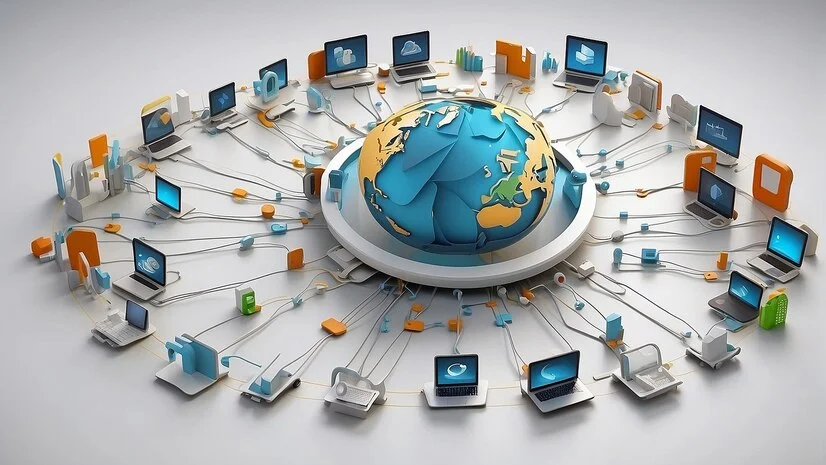Introduction to IP Addresses and Their Importance in Networking
In the vast and intricate world of networking, IP addresses serve as vital signposts guiding data across the digital landscape. Each address holds a unique identity that enables devices to communicate seamlessly, but not all addresses are created equal. Take, for instance, 11.11.11.21:5000—this seemingly random combination of numbers and letters packs a punch in terms of significance.
Understanding what this particular IP address means can unlock many doors in networking expertise and troubleshooting prowess. Whether you’re an IT professional seeking to optimize performance or just a curious tech enthusiast, delving into 11.11.11.21:5000 offers valuable insights worth exploring further! Let’s embark on this journey to demystify its components and discover how they play a crucial role in modern connectivity.
Breaking Down the Numbers: What Does 11.11.11.21:5000 Mean?
The IP address 11.11.11.21 is a unique identifier for devices in a network. It consists of four octets, each ranging from 0 to 255. These numbers help route data packets across the vast internet.
Breaking it down further, the first three octets indicate the network portion: in this case, “11.11.11.” This suggests that it’s part of a specific subnet used by an organization or service provider.
The last octet, “21,” designates an individual device within that network—a computer, server, or another endpoint.
Now let’s talk about the port number: :5000 indicates which application on that device should handle incoming requests. Ports serve as communication endpoints for various services running concurrently on a single IP address.
So when you see 11.11.11.21:5000, it’s not just random digits; they represent structured networking logic designed to facilitate smooth data transmission.
The Significance of 11, 21, and 5000 in the IP Address
The numbers in the IP address 11.11.11.21:5000 carry distinct meanings that can enhance our understanding of networking.
Starting with “11,” this number often represents a specific subnet within a larger network, potentially indicating its role in an internal system or environment. It creates distinction and aids in organization.
Then we have “21.” This digit is part of the device identification process on that subnet, which allows for unique connectivity among devices sharing the same network layer.
Lastly, “5000” refers to a port number. Ports are crucial because they define specific services or applications running on a device. In this case, port 5000 might be associated with web applications or custom software interfaces.
These values work together harmoniously to improve communication efficiency across networks while allowing for secure connections between various devices and services.
The Role of Ports in Networking
Ports play a vital role in networking, acting as communication endpoints for data transfer. Each port is associated with specific services or applications, allowing multiple processes to run simultaneously on a single IP address.
For example, when your web browser requests a website, it typically uses HTTP through port 80. This separation ensures that data packets reach the correct application without confusion.
Ports also enhance security by limiting access to certain services. By configuring firewalls and only opening necessary ports, network administrators can protect systems from unauthorized access.
Moreover, understanding ports allows for effective troubleshooting. If an application isn’t responding, checking the corresponding port can reveal if it’s blocked or malfunctioning. It’s this intricate dance of numbers that keeps our digital communications smooth and efficient.
How to Use 11.11.11.21:5000 for Network Troubleshooting
Using 11.11.11.21:5000 for network troubleshooting can be quite effective when you know what to look for.
Start by pinging the IP address to check connectivity. A simple command in your terminal can reveal if the device is reachable or not.
Next, utilize a browser and input 11.11.11.21:5000 directly into the URL bar. This action may lead you to a web interface of an application running on that port, offering insight into its status.
Utilize tools like Telnet or Netcat to test specific services running on port 5000. This helps confirm whether the service is operational.
Monitor traffic using packet analysis software too; it provides deeper visibility into any issues affecting communication between devices on your network.
This approach allows you to isolate problems effectively while gaining clarity about data flow within your infrastructure.
Advantages and Disadvantages of Using This Specific IP Address
Using the IP address 11.11.11.21:5000 comes with its unique set of advantages and disadvantages.
On the positive side, this address can facilitate straightforward network configuration for small-scale environments or testing scenarios. Its simplicity makes it easy to remember, which is beneficial in educational settings or quick troubleshooting tasks.
However, there are drawbacks as well. Being a non-standard IP address could lead to conflicts in larger networks where conventional addresses dominate. This can complicate connectivity and create security vulnerabilities if not managed properly.
Moreover, relying on such specific addresses may hinder scalability down the line. As systems grow, maintaining access through a less common IP could become cumbersome and inefficient.
Understanding both sides helps users make informed choices about their networking strategies when considering 11.11.11.21:5000.
7
Understanding the implications of 11.11.11.21:5000 provides valuable insights into networking dynamics. This specific IP address serves as an example that highlights the importance of correctly interpreting network addresses and ports.
Using this IP address can aid in troubleshooting various network issues, helping to pinpoint problems effectively. It’s essential, however, to recognize both the advantages and disadvantages associated with using it.
As technology continues to evolve, awareness around such specifics becomes crucial for professionals and enthusiasts alike. Whether you’re setting up a new server or diagnosing connectivity issues, knowing how to navigate these numbers can empower your networking capabilities significantly.
Embracing knowledge about IP addresses like 11.11.11.21:5000 enhances your understanding of networks while fostering better communication within tech environments. Stay informed and proactive—it will serve you well in any digital landscape you encounter.

















